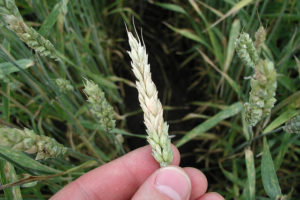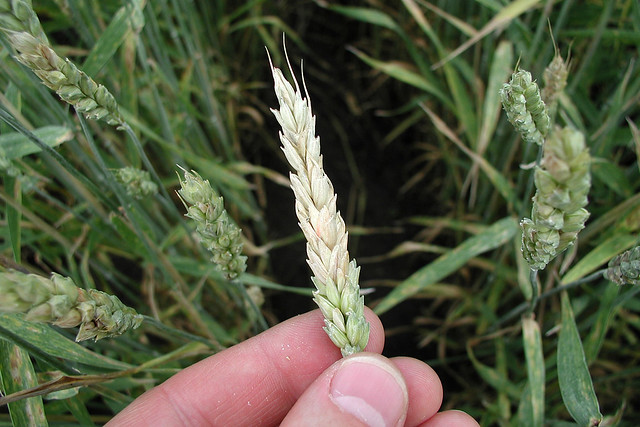Managing ear disease, June 2019
4 June 2019Managing ear disease
Scotland’s long day lengths aid the high yield potential of wheat crops, and retention of green leaf area is key in maximising crop potential. Fungicides applied to the ears of wheat, therefore, have a dual purpose as they top up earlier foliar disease management but also help to reduce the risk of ear diseases. The ear diseases themselves split into two camps – those that limit yield and those that can limit yield but also cause quality issues through the potential production of mycotoxins. It is essential that mycotoxin risk assessments are carried out for all wheat entering the food chain. The risk assessment is available online and reproduced below. It captures the main drivers of fusarium risk which are wet weather at flowering and then wet weather over grain filling and ripening.
This should be started before flowering so that you can include the risk in your T3 fungicide plans (a nice example of IPM practice) https://cereals.ahdb.org.uk/mycotoxins
A record should then be kept of rainfall at flowering and over-ripening as this is the main driver of risk and accounts for almost 60% of the maximum risk score that would be possible. We are at inherently lower risk in Scotland because many of the mycotoxin forming Fusarium species like warm temperatures, but many do occur widely in Scotland so we shouldn’t be complacent. Trash is another risk factor so direct drilled crops are at slightly greater risk.
In making decisions about ear sprays, check latest application dates carefully and also any other restrictions that apply when the programme for the crop is considered – such as the two application limit for strobilurins, SDHIs and for specific products such as Bravo.
Sign up to the FAS newsletter
Receive updates on news, events and publications from Scotland’s Farm Advisory Service


